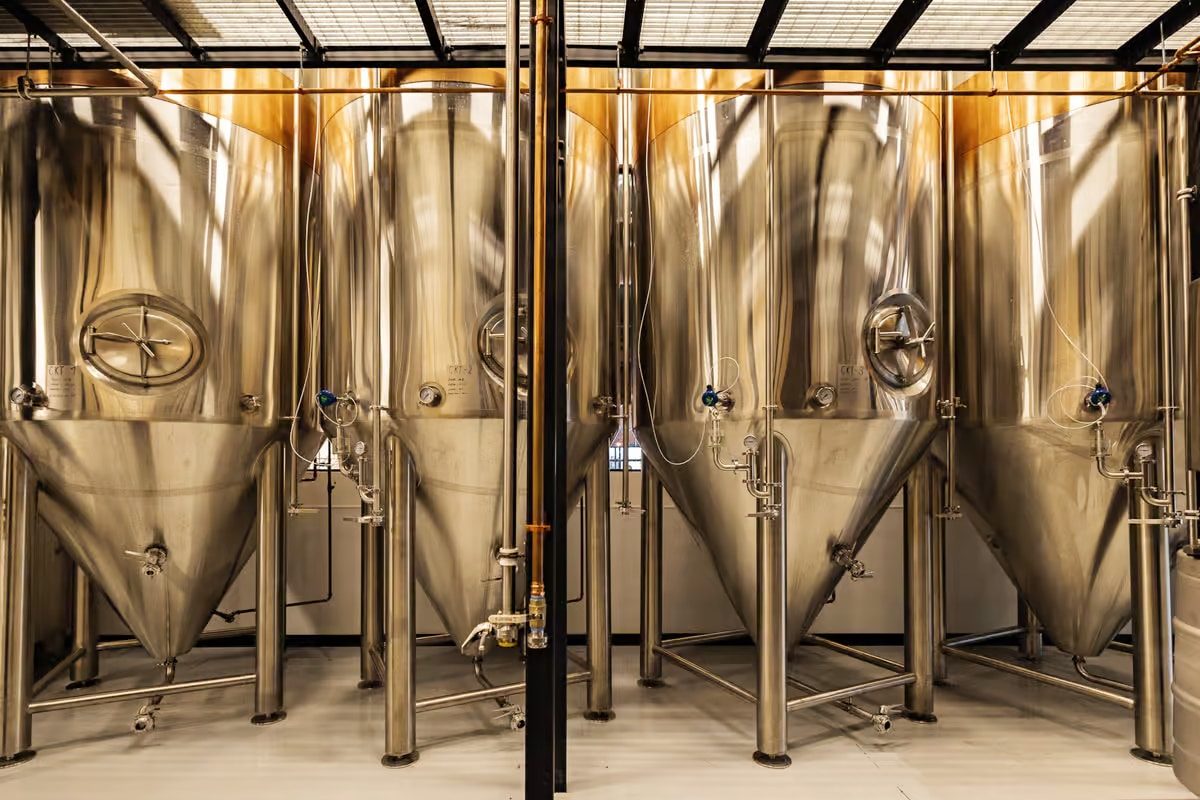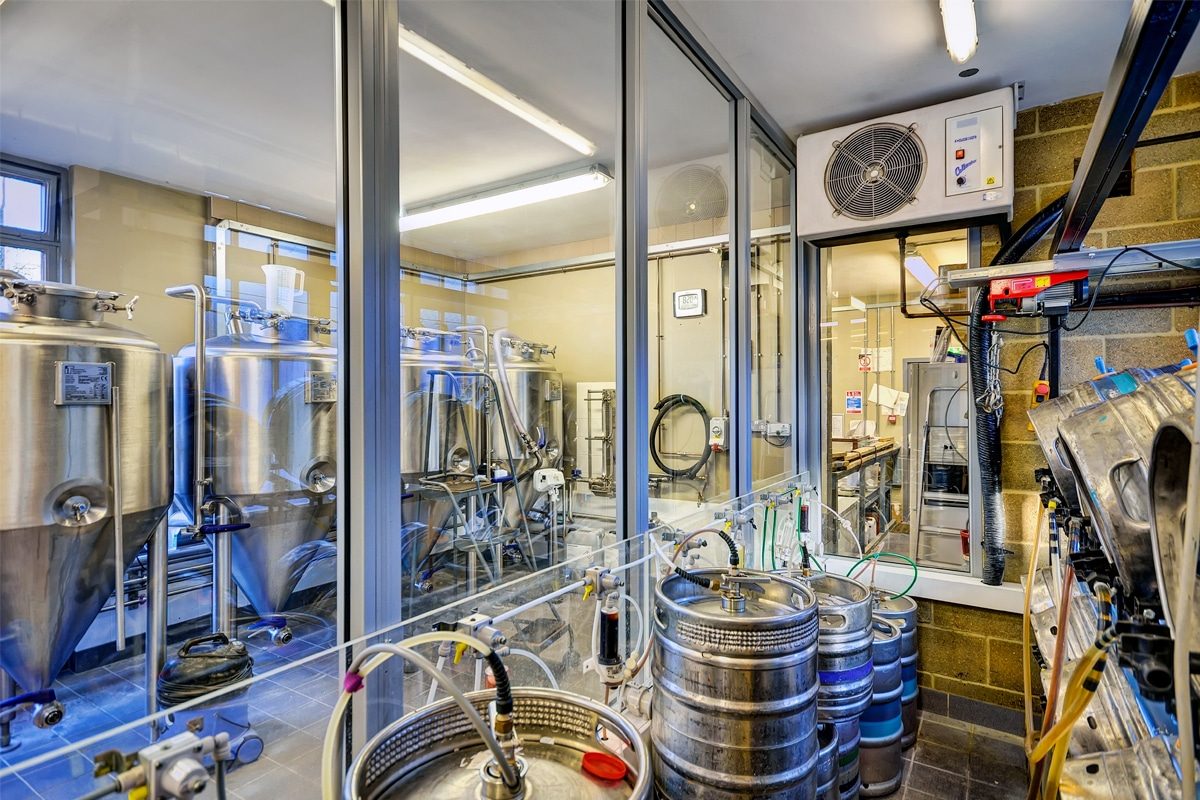
What Are The Ventilation And Exhaust Requirements For Brewery Equipment?
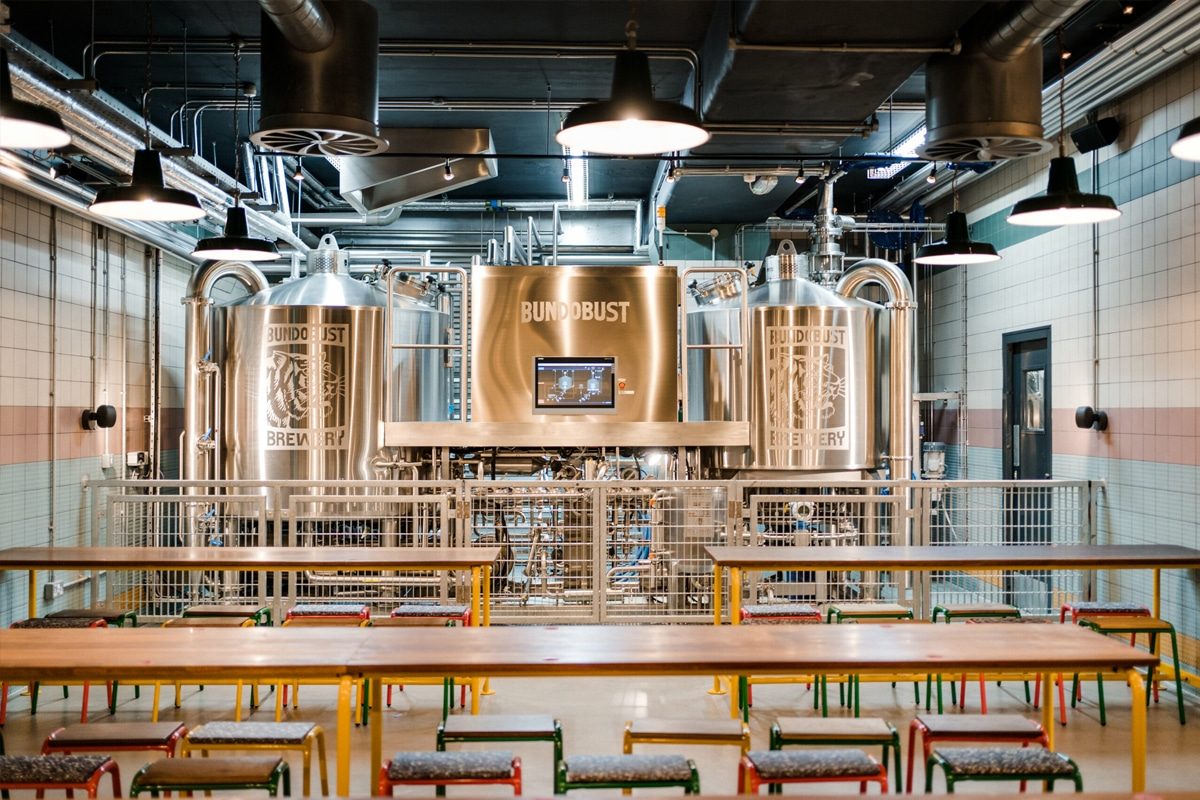
Importance of Proper Ventilation in Breweries
Temperature Control
Brewing processes generate substantial amounts of heat, particularly in the brewhouse where the mash tun, lauter tun, kettle, and whirlpool operate. Effective ventilation systems help to regulate the temperature within these areas, ensuring that the heat generated is efficiently removed. This is crucial for several reasons:
- Equipment Longevity: High temperatures can lead to premature wear and tear of brewing equipment. Proper ventilation helps to maintain a stable temperature, thereby extending the lifespan of the machinery.
- Product Quality: A constant temperature maintains the integrity of the brewing process. Fluctuations in temperature can affect the chemical reactions that occur during brewing, potentially compromising the quality of the beer.
- Energy Efficiency: By effectively removing excess heat, ventilation systems reduce the load on cooling systems, leading to lower energy consumption and cost savings.
Humidity Management
Breweries are inherently humid environments due to the large volumes of steam produced during brewing. Proper humidity management can help prevent several problems:
- Mold and Mildew: Excess humidity can promote the growth of mold and mildew, which can contaminate the brewing process and pose health risks to workers.
- Equipment Corrosion: High humidity levels can accelerate the corrosion of metal equipment, leading to increased maintenance costs and potential equipment failure.
- Building Integrity: Over time, excessive moisture can damage the structural integrity of the building, leading to costly repairs.
- Ventilation systems, including dehumidifiers and exhaust fans, help to control humidity levels, ensuring a safer and more efficient brewing environment.
Air Quality
The brewing process produces various gases and particulates that can affect air quality:
- Carbon Dioxide (CO2): Fermentation generates significant amounts of CO2, which can accumulate in poorly ventilated areas, posing asphyxiation risks to workers.
- Volatile Organic Compounds (VOCs): These compounds can be released during brewing and packaging, potentially causing respiratory issues and other health problems.
- Dust and Particulates: Packaging operations can produce dust and other particulates that need to be effectively managed to maintain air quality.
Safety
Safety is a paramount concern in any brewery, and proper ventilation plays a critical role in mitigating several hazards:
- Fire and Explosion Risk: The accumulation of flammable vapors and gases can create a fire or explosion hazard. Effective exhaust systems help to remove these vapors, reducing the risk.
- Health Hazards: Poor air quality can lead to respiratory problems and other health issues for workers. Proper ventilation ensures that harmful gases and particulates are adequately removed.
- Regulatory Compliance: Adhering to local and national safety standards requires effective ventilation systems to mitigate potential hazards and ensure a safe working environment.
Worker Comfort
A comfortable work environment can keep brewery workers productive and morale high:
- Heat Stress Reduction: By effectively managing temperature and humidity levels, ventilation systems help to prevent heat stress and related health issues among workers.
- Improved Air Quality: Removing contaminants from the air ensures that workers are not exposed to harmful substances, leading to better overall health and fewer sick days.
- Enhanced Productivity: A comfortable working environment enables workers to perform their tasks more efficiently and with greater satisfaction, contributing to the overall success of the brewery.
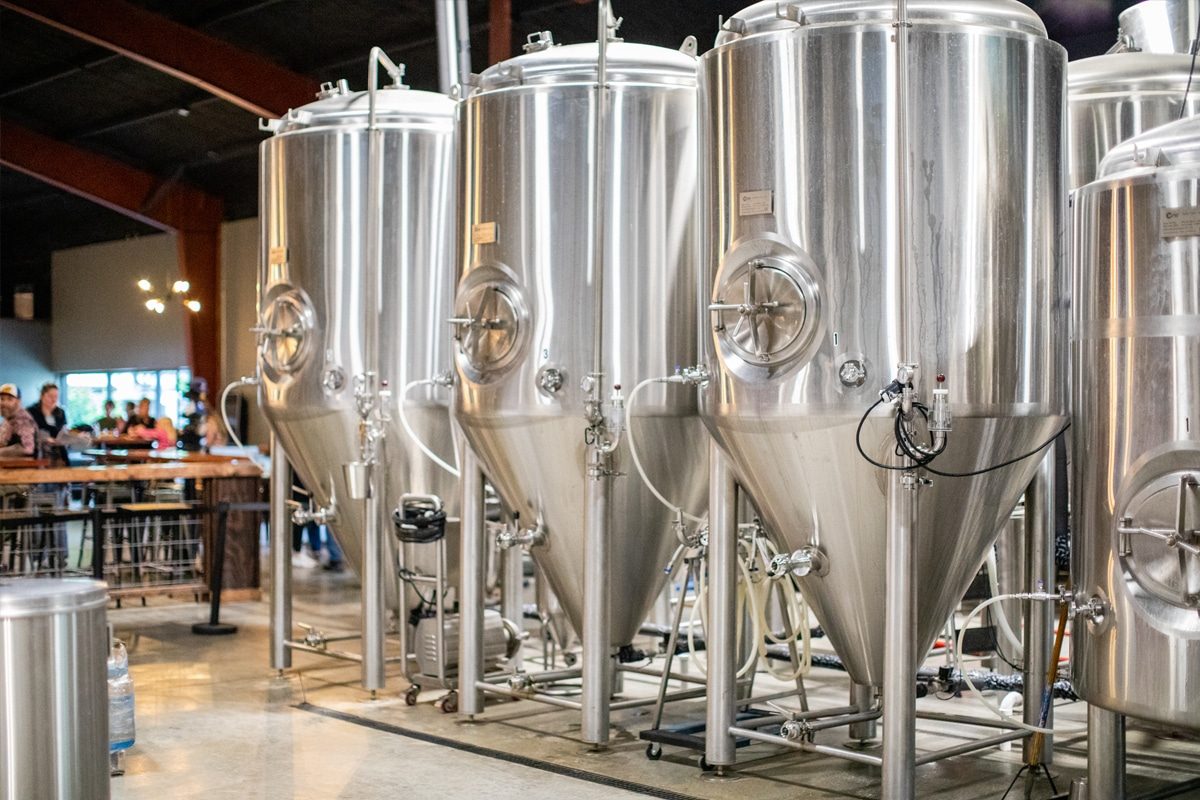
Key Factors Influencing Ventilation and Exhaust Requirements
Brewery Size and Layout
The size and layout of a brewery significantly impact its ventilation and exhaust needs. Larger breweries with extensive equipment and production areas require more robust and comprehensive ventilation systems. Key considerations include:
- Production Volume: High production volumes generate more heat, humidity, and emissions, necessitating more powerful ventilation and exhaust systems.
- Spatial Distribution: The layout of the brewery, including the positioning of brewhouse, fermentation areas, packaging lines, and cold storage, affects airflow patterns. Efficient ventilation design must account for these spatial arrangements to ensure proper air distribution and removal of contaminants.
- Zoning: Different zones within the brewery, such as high-heat areas (e.g., brewhouse) and high-moisture areas (e.g., fermentation), have distinct ventilation needs. Segregating these zones and designing tailored ventilation solutions for each is crucial.
Local Climate
The local climate of the brewery’s location can help determine ventilation and exhaust requirements:
- Temperature: Breweries in warmer climates face greater challenges in managing internal temperatures. Increased ventilation capacity is needed to remove excess heat and maintain a comfortable working environment.
- Humidity: High humidity levels in the surrounding environment exacerbate moisture management issues within the brewery. Enhanced dehumidification and ventilation systems are required to control internal humidity levels and prevent condensation and mold growth.
- Seasonal Variations: Seasonal changes can affect ventilation needs. For instance, hot summers and cold winters require adaptable ventilation systems that can efficiently handle varying temperature and humidity conditions throughout the year.
Regulatory Requirements
Complying with local, national, and industry-specific regulations contributes to the successful operation of a brewery. Regulatory requirements often dictate specific ventilation and exhaust standards to ensure worker safety and environmental protection:
- Occupational Safety and Health Regulations: Agencies such as OSHA (Occupational Safety and Health Administration) in the United States set standards for indoor air quality, permissible exposure limits for gases like CO2, and ventilation requirements to protect worker health.
- Environmental Regulations: Environmental protection agencies may impose limits on emissions of VOCs and other pollutants. Breweries must install appropriate exhaust systems to meet these standards and minimize their environmental impact.
- Building Codes: Local building codes specify requirements for ventilation systems in commercial and industrial buildings. Adhering to these codes ensures the structural integrity and safety of the brewery.
- Fire Safety Standards: Ventilation systems must also comply with fire safety regulations, including the removal of flammable vapors and ensuring proper airflow to prevent fire and explosion hazards.
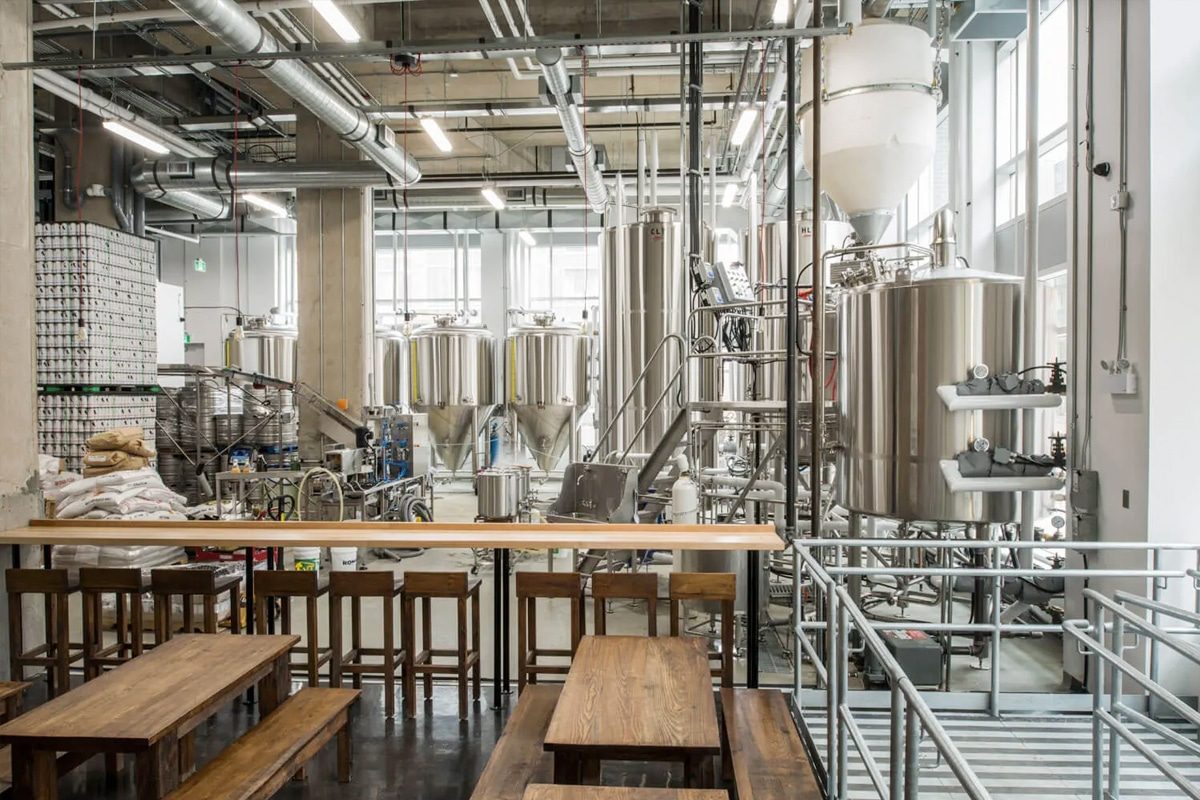
Types of Ventilation Systems
General Ventilation
General ventilation systems are designed to provide overall air circulation throughout the brewery. These systems ensure that the entire brewing facility maintains a consistent and comfortable environment by managing heat, humidity, and air quality. Key aspects of general ventilation include:
- Air Exchange: General ventilation involves the continuous exchange of indoor air with fresh outdoor air. This helps dilute and remove contaminants, including heat, humidity, and gases produced during the brewing process.
- Temperature Control: By circulating air throughout the brewery, general ventilation helps to evenly distribute heat, preventing hot spots and ensuring a comfortable working environment. This is particularly important in areas such as the brewhouse, where high temperatures are common.
- Humidity Management: General ventilation systems help to control humidity levels by removing moisture-laden air and replacing it with drier air from outside. This is crucial for preventing condensation, mold growth, and equipment corrosion.
- Air Quality Improvement: By continuously introducing fresh air, general ventilation systems help to maintain good indoor air quality, reducing the concentration of airborne contaminants such as CO2, VOCs, and dust.
Common components of general ventilation systems include:
- Supply Fans: These fans draw fresh air into the brewery, ensuring a constant supply of outdoor air.
- Exhaust Fans: These fans remove stale air, heat, and contaminants from the brewery.
- Air Ducts: Ductwork is used to distribute fresh air throughout the facility and to carry exhaust air out of the building.
- Air Filters: Filters are used to remove dust, pollen, and other particulates from the incoming air, ensuring a clean and healthy environment.
Local Exhaust Ventilation (LEV)
Local Exhaust Ventilation (LEV) systems are designed to capture and remove contaminants at their source before they can disperse into the general air of the brewery. These systems are particularly effective for controlling specific hazards and are often used in conjunction with general ventilation systems. Key aspects of LEV include:
- Source Capture: LEV systems are strategically placed at points where contaminants are generated, such as above kettles, fermenters, and packaging lines. This ensures that pollutants are captured immediately, preventing them from spreading.
- Targeted Removal: By focusing on specific sources of contamination, LEV systems can efficiently remove high concentrations of heat, steam, gases, and particulates. This targeted approach enhances overall air quality and reduces the burden on general ventilation systems.
- Improved Safety: LEV systems help to protect workers from exposure to harmful substances by effectively removing contaminants from the immediate work area. This is especially important in areas where hazardous gases like CO2 are produced.
- Energy Efficiency: Because LEV systems capture contaminants at their source, they can often operate more efficiently than general ventilation systems, reducing the overall energy consumption of the brewery’s HVAC system.
Common components of LEV systems include
- Hoods and Capture Devices: These are positioned close to the source of contamination to capture pollutants as they are generated. Examples include steam hoods above brewing kettles and extraction arms over fermentation tank
- Ductwork: Ducts transport the captured contaminants from the source to a filtration or exhaust point.
- Fans: High-efficiency fans are used to create the suction needed to capture and transport contaminants.
- Filters and Scrubbers: These devices are used to clean the exhaust air by removing particulates, gases, and other pollutants before releasing them outside.
- Control Systems: Automated controls can adjust the operation of the LEV system based on real-time conditions, ensuring optimal performance and energy efficiency.
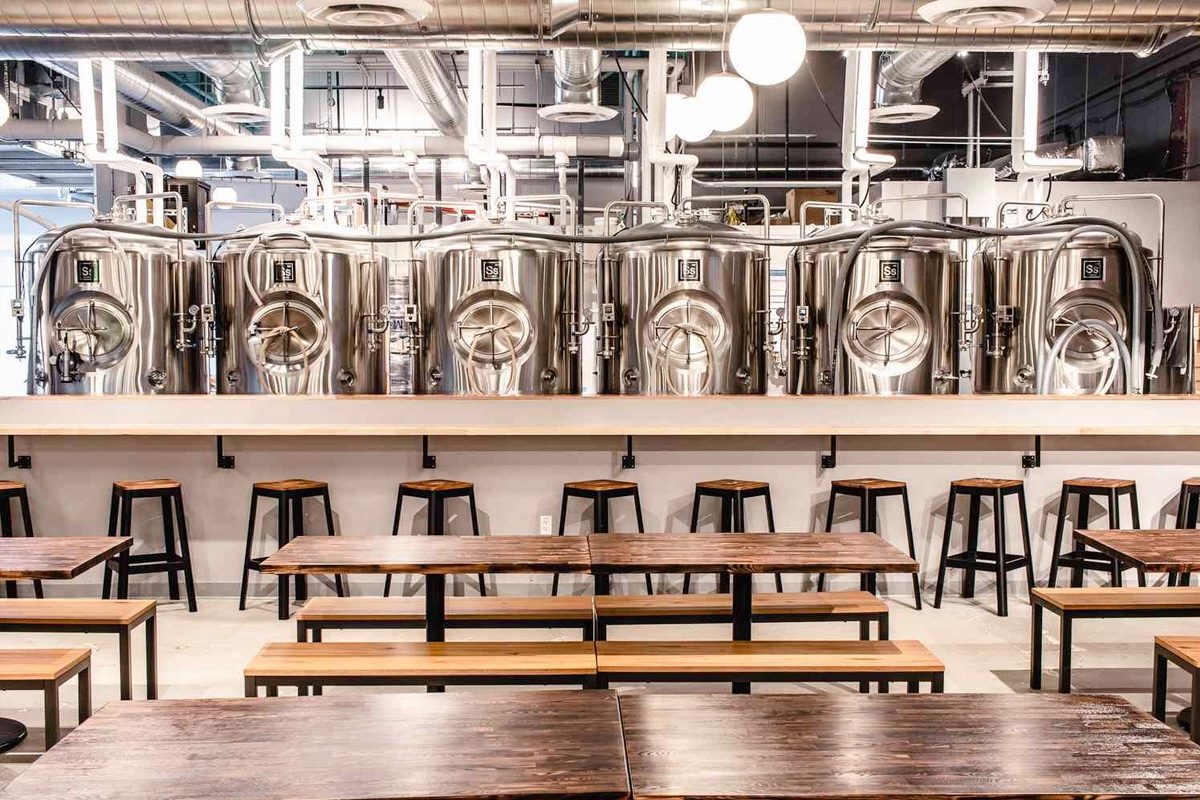
Types of Brewery Equipment Requiring Ventilation and Exhaust
Brewhouse Equipment
The brewhouse equipment is the core of any brewery, where the initial stages of beer production take place. This area includes several key vessels and equipment that generate significant heat and steam, requiring effective ventilation and exhaust systems:
- Mash Tun: Used to mix crushed grains with hot water to create the mash. This process generates considerable heat and moisture, necessitating efficient exhaust systems to remove steam and control humidity.
- Lauter Tun: Following the mash, the wort is separated from the spent grains in the lauter tun. While less heat-intensive than the mash tun, it still contributes to the overall thermal load in the brewhouse.
- Kettle: The wort is boiled in the kettle, a process that produces large volumes of steam and heat. A dedicated steam exhaust hood captures and exhausts steam, preventing it from accumulating and raising humidity levels.
- Whirlpool: After boiling, the wort is transferred to the whirlpool for separation of hop particles and trub. This vessel also generates steam and requires effective exhaust systems.
Fermentation Tanks
Fermentation is a critical stage in brewing where yeast converts sugars into alcohol and carbon dioxide (CO2). This process occurs in large fermentation tanks, which require specific ventilation solutions:
- CO2 Ventilation: Fermentation generates substantial amounts of CO2, which must be safely vented to prevent buildup. Accumulated CO2 can pose serious health risks, including asphyxiation. Effective CO2 exhaust systems, including vent pipes and CO2 monitors, are essential.
- Temperature Control: Fermentation tanks need to maintain consistent temperatures to ensure optimal yeast activity and product quality. Ventilation systems help regulate temperature by removing excess heat generated during fermentation.
- Air Quality Management: Ensuring good air circulation around fermentation tanks prevents the buildup of other gases and odors, contributing to a safer and more pleasant working environment.
Bright Tanks
Bright tanks are used for maturing, clarifying, and carbonating the beer before packaging. Although these tanks do not generate as much heat as fermentation tanks, they still require effective ventilation:
- Pressure Management: Bright tanks are pressurized to carbonate the beer. Ventilation systems must manage any potential overpressure situations and safely vent excess CO2.
- Temperature and Humidity Control: Maintaining the correct temperature in the bright tank area preserves the quality of your beer. Ventilation helps manage ambient conditions, preventing condensation and mold growth.
Packaging Lines
Packaging lines, where beer is bottled, canned, or kegged, also generate specific ventilation needs:
- Dust and Particulate Control: Packaging operations can produce dust and other particulates that must be controlled to ensure a clean environment. Local exhaust ventilation (LEV) systems can capture these particles at the source.
- VOC Removal: Volatile Organic Compounds (VOCs) can be released during packaging, especially if adhesives or solvents are used. Proper exhaust systems are needed to capture and remove these emissions.
- Worker Safety: Ensuring good air quality around your packaging line can help ensure worker safety and comfort. Localized exhaust hoods and air filtration systems help maintain a healthy work environment.
Cold Storage Areas
Cold storage areas are used to store finished beer before distribution. These areas have unique ventilation requirements to maintain optimal storage conditions:
- Temperature Consistency: Cold storage must maintain a consistent low temperature to preserve beer quality. Ventilation systems help distribute cold air evenly and remove any excess heat.
- Condensation Prevention: Proper ventilation prevents condensation, which can lead to mold growth and damage to both the product and storage infrastructure.
- Air Quality: Ensuring good air quality in cold storage can prevent contamination and preserve product integrity. Air circulation systems help keep the environment clean and fresh.
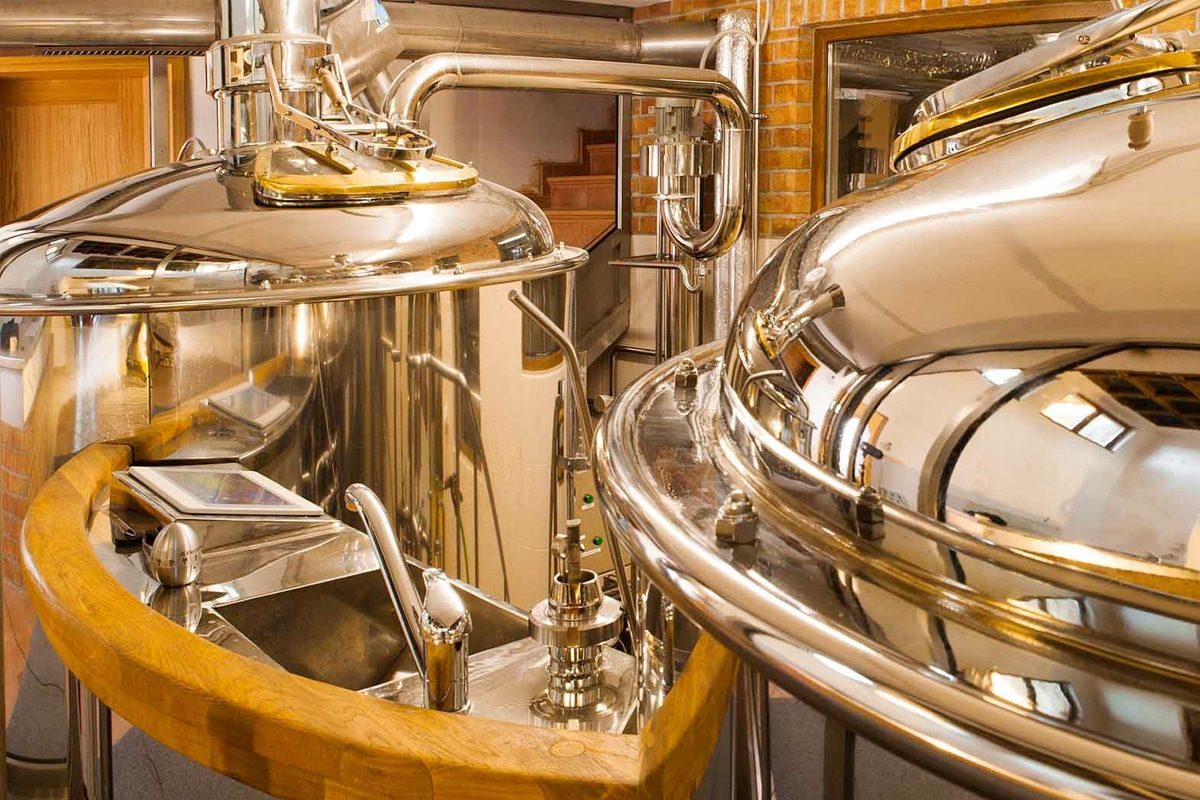
Best Practices for Brewery Ventilation and Exhaust
Design Considerations
- Holistic Planning: Integrate ventilation and exhaust systems into the overall brewery design from the outset. This includes considering the layout of the brewhouse, fermentation area, packaging lines, and cold storage to ensure efficient air circulation and contaminant removal.
- Proper Sizing: Ensure that ventilation and exhaust systems are appropriately sized for the specific needs of the brewery. This involves calculating the heat load, moisture generation, and contaminant levels to determine the capacity of fans, ducts, and exhaust hoods.
- Zoning: Design the ventilation system to accommodate different zones within the brewery, each with its unique ventilation requirements. For example, the brewhouse may need high-capacity steam exhaust systems, while the fermentation area requires effective CO2 venting.
- Airflow Patterns: Optimize airflow patterns to prevent cross-contamination between different areas. This can be achieved by strategically placing air intakes and exhaust vents to ensure a unidirectional flow of air.
- Flexibility: Design systems that are adaptable to changes in production volume or processes. Modular components can be added or reconfigured as the brewery grows or production methods evolve.
Regular Maintenance
- Routine Inspections: Conduct regular inspections of ventilation and exhaust systems to identify and address any issues promptly. This includes checking for blockages, leaks, and wear and tear on components.
- Cleaning and Servicing: Regularly clean and service components such as filters, fans, ducts, and exhaust hoods to ensure they operate efficiently. Accumulated dust, grease, and other contaminants can impair system performance.
- Performance Monitoring: Implement monitoring systems to track the performance of ventilation and exhaust equipment. Sensors and controls can provide real-time data on airflow, temperature, humidity, and contaminant levels, allowing for timely adjustments and maintenance.
- Maintenance Schedule: Establish a comprehensive maintenance schedule that outlines specific tasks and intervals for servicing each component of the ventilation system. This helps prevent unexpected breakdowns and extends the lifespan of the equipment.
Use of High-Quality Equipment
- Durability and Reliability: Invest in high-quality ventilation and exhaust equipment that is durable and reliable. This includes selecting materials that can withstand the harsh conditions of a brewery environment, such as high humidity and temperature fluctuations.
- Advanced Technology: Utilize advanced technology, such as variable speed fans and automated control systems, to enhance the efficiency and effectiveness of the ventilation system. These technologies allow for precise control over airflow and energy usage.
- Certified Equipment: Choose equipment that meets industry standards and certifications. This ensures that the equipment has been tested and approved for use in demanding environments like breweries.
Energy Efficiency
- Energy-Efficient Components: Select energy-efficient components, such as high-efficiency fans, motors, and heat recovery systems. These components reduce energy consumption and operating costs.
- Heat Recovery: Implement heat recovery systems to capture and reuse waste heat generated by brewing processes. This can significantly reduce the energy required for heating and cooling the brewery.
- Smart Controls: Use smart controls and automation to optimize the operation of ventilation and exhaust systems. Programmable controls can adjust airflow and ventilation rates based on real-time conditions, reducing unnecessary energy usage.
- Insulation and Sealing: Ensure that all ducts, pipes, and equipment are properly insulated and sealed to prevent energy loss and improve overall system efficiency.
Compliance with Regulations
- Local and National Regulations: Familiarize yourself with local and national regulations governing brewery ventilation and exhaust systems. This includes health and safety standards, environmental regulations, and building codes.
- Regular Audits: Conduct regular audits to ensure compliance with all relevant regulations. This involves reviewing system design, performance, and maintenance records to identify any areas of non-compliance.
- Documentation and Reporting: Maintain thorough documentation of all ventilation and exhaust system designs, installations, inspections, and maintenance activities. This documentation is essential for demonstrating compliance during regulatory inspections.
- Employee Training: Train employees on the importance of ventilation and exhaust systems, as well as their roles in maintaining compliance. This includes understanding how to operate and maintain equipment safely and effectively.
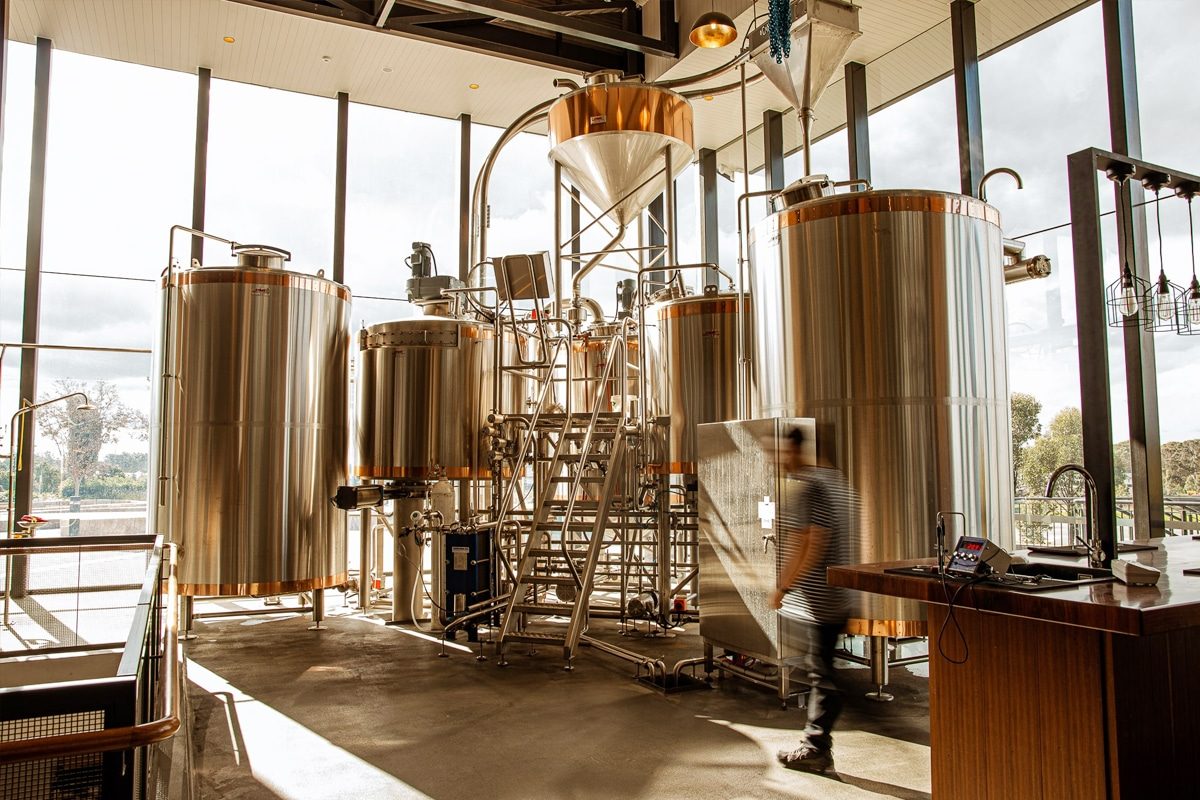
Summarize
